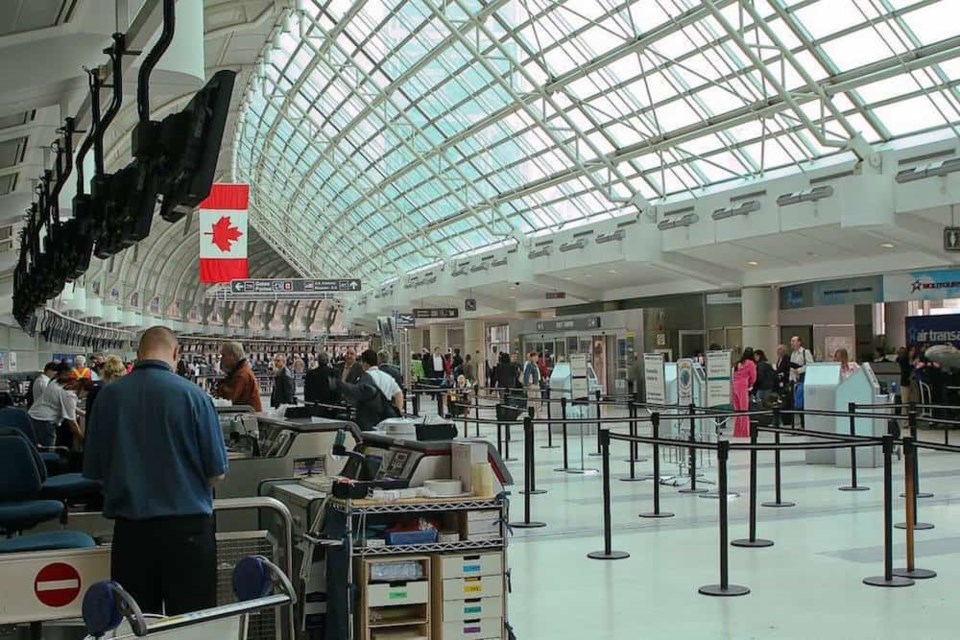Today, Minister of Transport Marc Garneau announced Canada's new Flight Plan for navigating COVID-19.
In a release, the government notes that the plan is the foundation for Canada's current and future efforts to reduce the public health risks of COVID-19 while travelling by aircraft.
This action plan puts in place a multi-layered system of safety measures to support public health by protecting air travellers and air industry workers from COVID-19. The Government of Canada has worked with public health authorities, counterparts around the world, and industry partners to develop a plan for COVID safety in air travel that is aligned to emerging global safety standards and best practices.
Key changes apply to all aspects of air travel, including in airports and aircraft. They include:
- travel restrictions;
- mandatory use of face masks for passengers and crew;
- mandatory health checks by air carriers prior to passenger boarding;
- temperature screening at the busiest Canadian airports and at points of origin for all incoming flights to Canada;
- restricted services and passenger movement during flights;
- and enhanced cleaning and sanitation protocols and practices.
In airports, these designs and measures include:
- enhanced air conditioning and filtration systems;
- frequent cleaning of high-touch areas;
- new touchless technologies to scan boarding passes;
- and physical distancing measures.
The release states that, "modern passenger aircraft also offer a unique environment with design characteristics that reduce the risk of viral transmission. The air is exchanged at a high rate, with HEPA filtration in most large commercial aircraft. Further, the potential spread of the virus between rows is reduced by the high seatbacks and the fact that almost all passengers are seated in the same direction."
To date, the Government of Canada says it isn't aware of any cases attributed to passenger-to-passenger transmission on a flight to or from Canada. However, work continues with the provinces and territories to strengthen contact-tracing processes to reduce and quantify the risk of COVID-19 transmission during air travel.
"Canada is a large country and safe and secure air travel is critical for Canadians to connect with loved ones and for those who rely on it to support their businesses,"said Minister of Transport Marc Garneau.
"Implementing Canada's Flight Plan reinforces our ongoing commitment to protect public health and minimize the COVID-19 risks associated with air travel. This comprehensive plan aligns the actions of government and industry partners to the best practices emerging around the world to protect passengers and air industry workers from COVID-19."
Canada's Flight Plan will be refined as the Government of Canada learns more about COVID-19, and as international best practices evolve to ensure safety and efficiency of the Canadian aviation system in the months and years to come.
At the start of the month, Garneau announced that mandatory temperature screenings would come into effect at Canada's four largest airports starting Thursday, July 30. In September, temperature screening stations will be in place in the departure sections of the next 11 busiest airports in Canada (St. John’s, Halifax, Québec City, Ottawa, Toronto – Billy Bishop, Winnipeg, Regina, Saskatoon, Edmonton, Kelowna, Victoria).
Air Canada began mandatory customer pre-flight temperature checks system-wide on May 15. Westjet, Perimeter, Bearskin, Keewatin and CalmAir have also independently elected to pilot the implementation of passenger temperature screening.
With this in mind, Dr. Theresa Tam, Canada's chief medical officer of health, says the checks aren't fail-proof because some who contract the virus are asymptomatic at first or never develop any signs of COVID-19.
"The more you actually understand this virus, the more you begin to know that temperature-taking is not effective at all," she said in a conference.
Read a B.C. man's opinion about why temperature-taking for COVID-19 is discriminatory HERE.



